So this morning there was a fantastical headline in the Washington Post here:
Pentagon buries evidence of $125 billion in bureaucratic waste
What the hay? Isn’t this a Ben Affleck movie about a government cover-up? No, it’s an internal report created by the Defense Business Board, “a federal advisory panel of corporate executives, and consultants from McKinsey & Company.” Apparently, they identified “a clear path” to save $125 billion (with a B) over five years, but the report was quietly dismissed because of its embarrassing findings. Whoa – this is a good blog post.
For people cynical of large government, this is shocking fodder. Sad, but true. Bureaucracies of any form are usually wasteful – and the Department of Defense, apparently, is no exception.
McKinsey & Co. The link to the McKinsey & Co 77 page report here and few key slides, which shows the flow of a typical cost-reduction presentation. Create a baseline, compare to best practices, explain the gap, estimate savings, and show how it can get done.
My only criticism would be that it is a bit light on specifics, but there is likely a bigger appendix somewhere (perhaps also dusted under the rug). Yes, consultants consult the government all the time.
1) Create a baseline
McKinsey created a baseline of the total spend and headcount for the 6 business functions which support the military. This is usually called SG&A in the corporate world and has a run-rate of $134 billion annually, and employs 1M people.
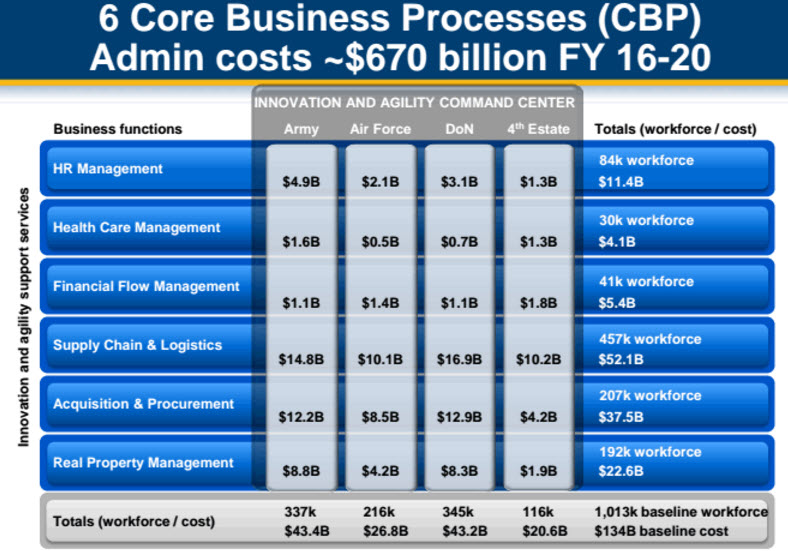
2) Show benchmarks
In this case, McKinsey shows that there are annual productivity gains by industry, and argues that the Department of Defense should also be able to “do more with less” by improving productivity over=time. Using best practices.
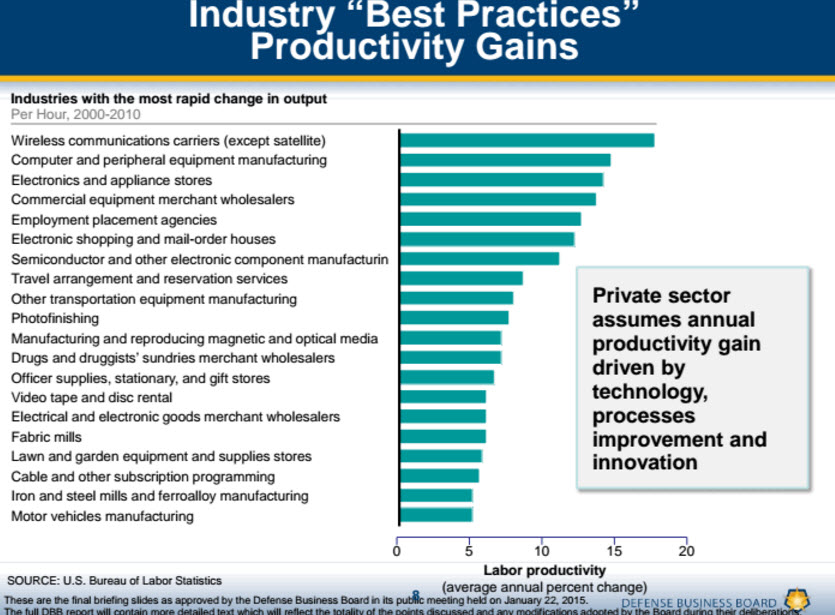
3) Propose a savings rate
They propose 7% as a good middle-of-the-road productivity rate. McKinsey and the team called this a “business as usual” level of savings.
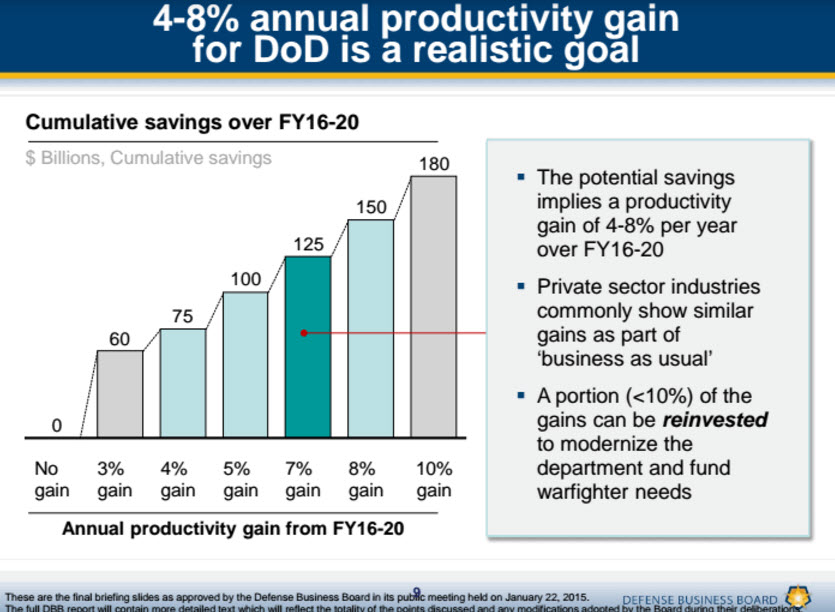
4) Give a range
Experienced consultants know that “point estimates are for suckers” and there will always be some variability of results (hat tip: PN). This also provides a safety net of expectations for the client. You can also call this sensitivity analysis, but the main point is give a range of potential results (how narrow or wide depends on your level of confidence, and your control of the inputs/outputs).
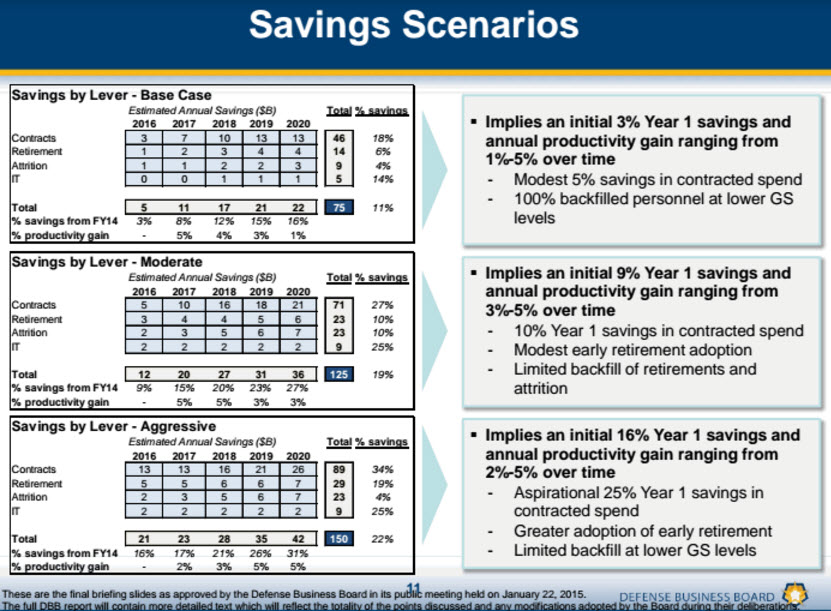
5) Sell them on the benefits
All change is tough and potentially cutting $125 billion out of the Department of Defense is NOT a Sunday stroll of change management. However, it does provide a lot of purchasing gunpowder to do impactful things like support 50 full brigades (210,000+ soldiers). Opportunity cost.
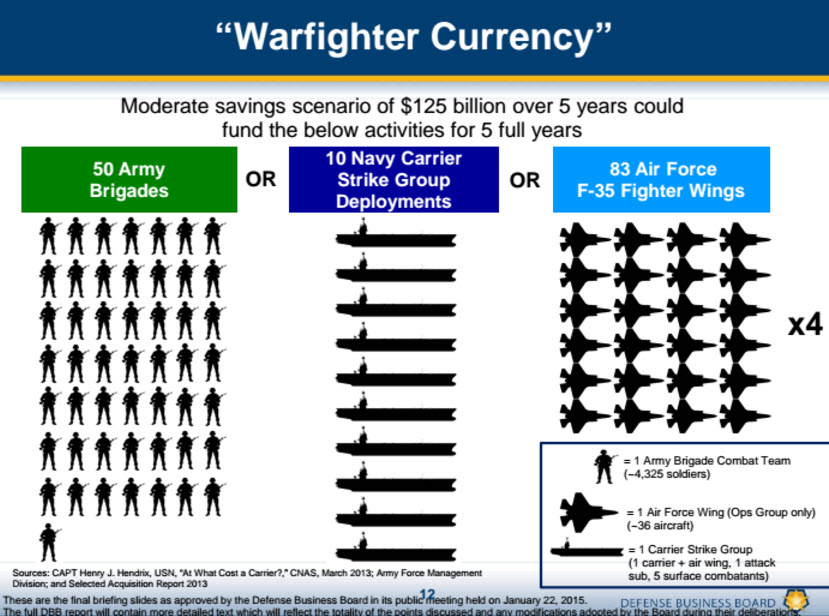
6a) Show data.
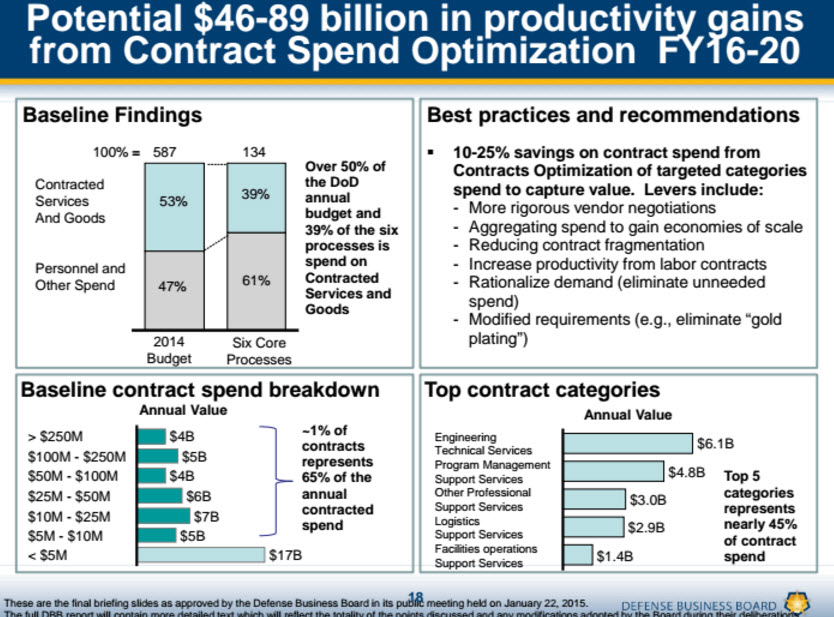
6b) Show data.
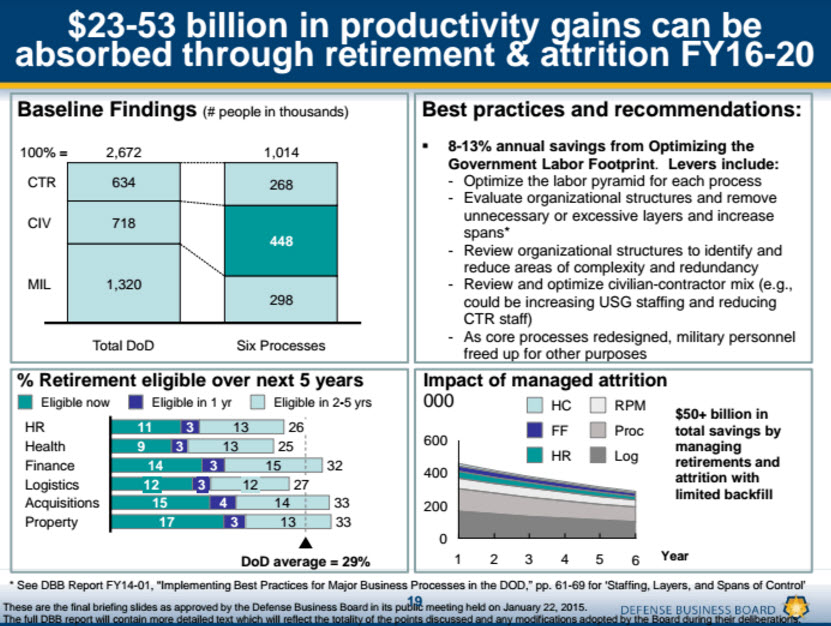
6c) Show data.
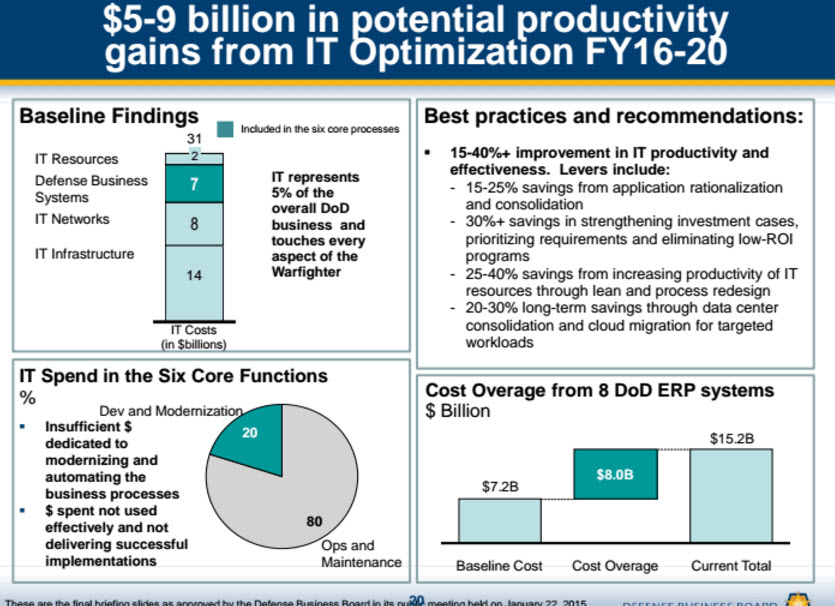
7) Provide a timeline
Make it easy for the client to say “yes” by providing a timeline and specific actions, accountability, and measurement tools. Remember, the bigger the organization (uh, DoD is huge), the greater the inertia.
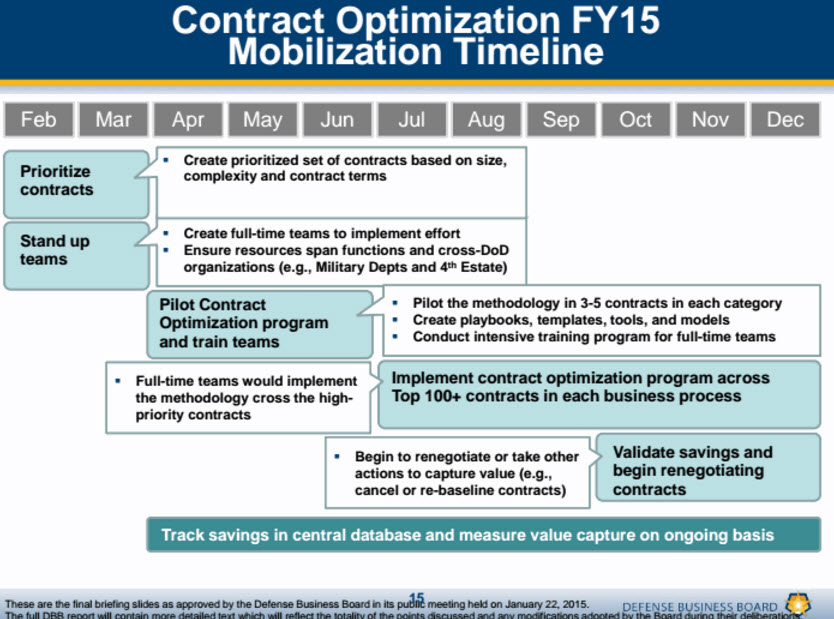
8) Outline success factors
There is no benefit to providing an unrealistic view of the work needed. Clearly this is a big task and it requires (leadership, metrics, planning etc). Huge change management challenge. After you read the Washington Post article you will see there was almost none of this.
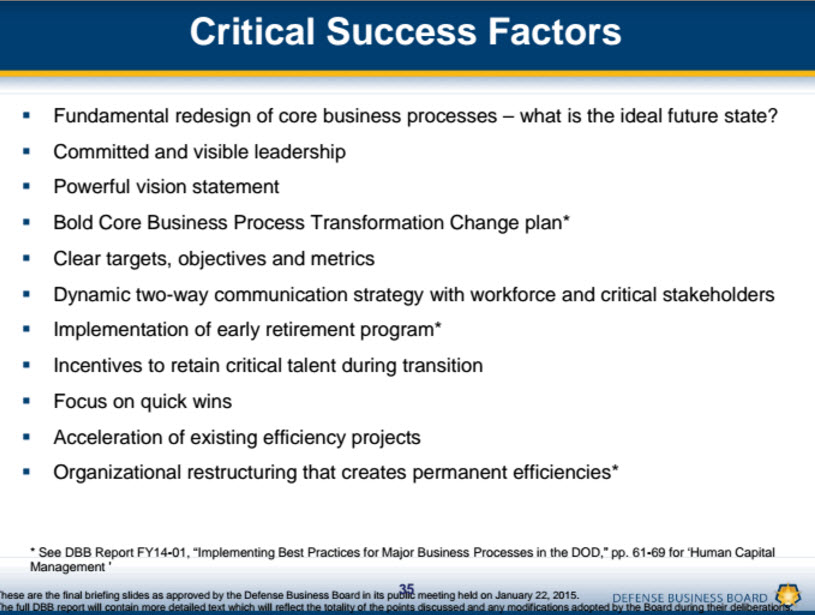
9) Provide case studies
Executives LOVE to see case studies. It is one of the most common questions, “Where else have you done this?”. Naturally, they don’t want to be a guinea pig for you to experiment on.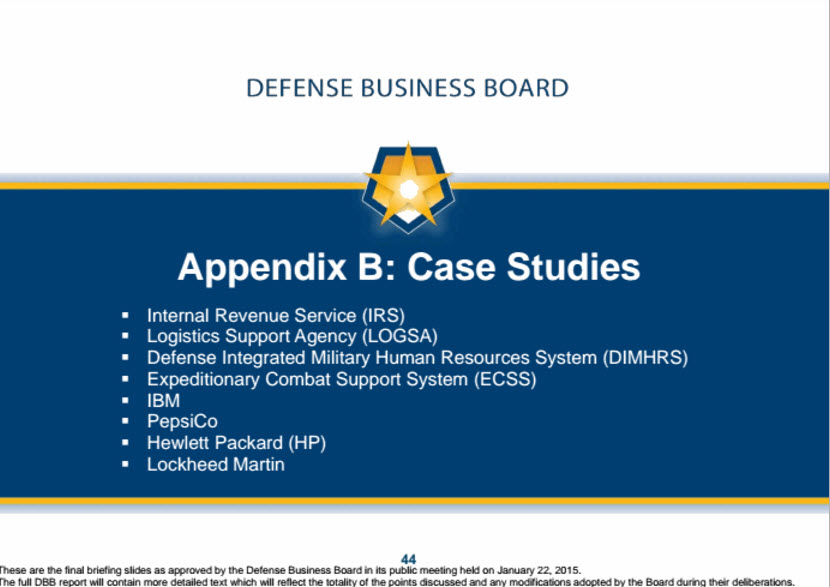
Review lots of decks
It’s always useful to look at decks – especially from the big 3 or big 4 – to glimpse at the logic used to tell a story. How was the ambiguous problem structured? How was data used? How were the slides formatted? How were titles and graphs used? What was the tone of the presentation? What were the holes in logic?
The larger question of why didn’t the Department of Defense do something with this recommendation is a different question, and better reviewed by the Washington Post here.
